Pizza, the iconic dish adored worldwide, has long been associated with Naples. But could its origins stretch back much further in time? A stunning discovery in Pompeii, buried beneath volcanic ash for nearly two millennia, reveals a fresco that closely resembles modern pizza. While it’s not quite the tomato-and-mozzarella creation we know today, the image provides a tantalizing glimpse into the ancient origins of this beloved dish. In this article, we explore how this remarkable fresco may be linked to the culinary traditions that led to the pizza we enjoy today.
The Fresco in Detail: A Visual Peek into Ancient Pompeii
The fresco, discovered during excavations in Pompeii, shows a round focaccia-like bread on a silver platter, topped with fruits such as pomegranate and dates, along with spices, all ringed by what appears to be a crust. Experts speculate that the bread may have been flavored with a herb cheese spread known as “moretum,” a common ancient Roman food item, or with spices from the region. A goblet of wine and other fruits like dried figs were also included, making the image appear similar to what we might call a pizza today.
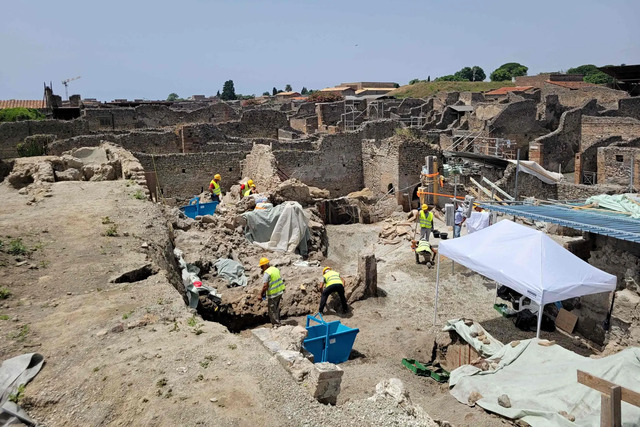
What makes this find even more remarkable is the context in which it was found. The fresco was located in a house with a bakery, providing a direct connection to food production and consumption in Pompeii. The vivid detail in the painting highlights the significance of meals, not only as nourishment but also as an important part of Roman hospitality traditions. As such, the fresco is not just a still-life but a reflection of ancient customs and daily life.
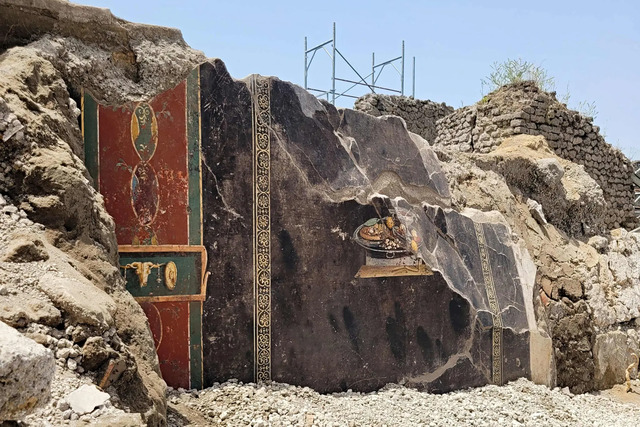
Video
Watch the video about a Pompeii fresco that depicts what might be the precursor to pizza.
Pizza Ancestor or Not? Expert Opinions
While the fresco’s resemblance to pizza is striking, scholars are cautious about making any definitive connections between the ancient dish and its modern counterpart. Archaeologist Gabriel Zuchtriegel, director of Pompeii Archaeological Park, was quick to clarify that while the fresco does look similar to pizza, it’s not pizza as we know it. According to Zuchtriegel, “It’s not a pizza. But perhaps it could have been a distant ancestor of this food.”
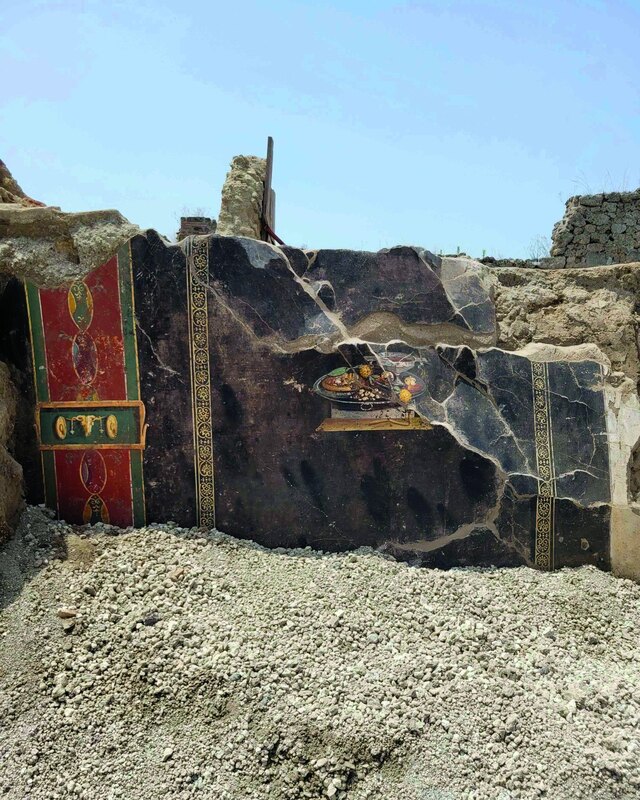
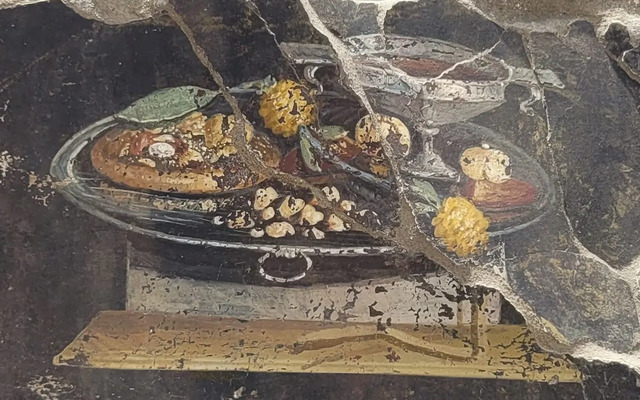
Indeed, the key ingredients that define today’s pizza—tomatoes and mozzarella—weren’t introduced to Italy until the 1500s, long after the eruption of Mount Vesuvius in 79 AD that buried Pompeii. However, Gino Sorbillo, one of Naples’ oldest pizzerias’ owners, offers a more open interpretation, suggesting that the image could indeed represent an ancient form of pizza. “In ancient Pompeii, we already knew that there were forms of flatbread, made with grains, water, salt and maybe beer as a leavening agent,” Sorbillo explains, emphasizing the link between ancient flatbreads and modern pizza.
The idea of a “pizza-like” dish in antiquity may seem far-fetched to some, but it’s important to recognize that flatbreads were a common part of Roman cuisine, and many of them were topped with various ingredients such as vegetables, fruits, and even fish.
The Role of Flatbreads in Ancient Roman Culture
Flatbreads have been a staple in human diets for thousands of years, predating the rise of modern pizza by millennia. In the Roman Empire, flatbreads were typically made from grains like wheat and barley, often seasoned with herbs or olive oil. These flatbreads could be topped with a variety of ingredients, much like the pizza we know today.
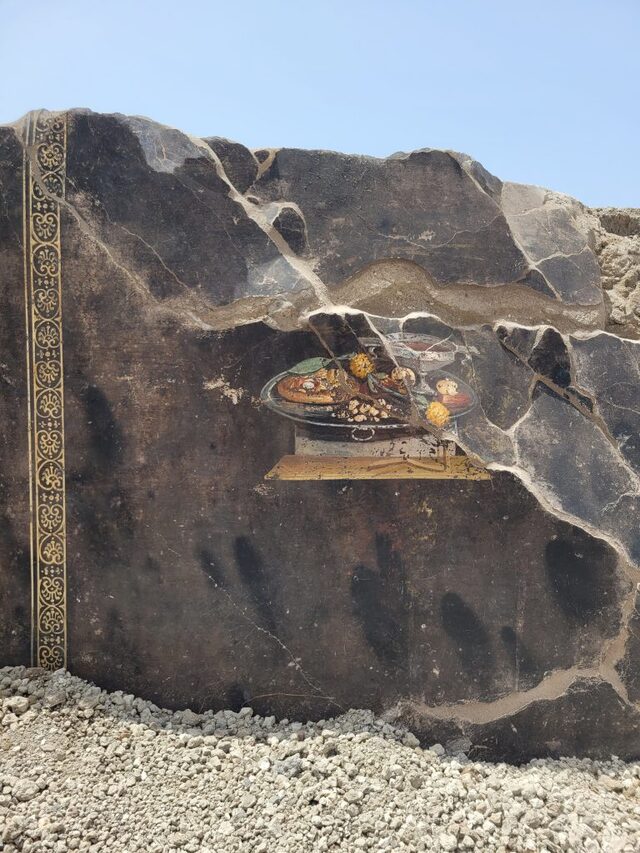
In ancient Rome, the concept of food as a gift of hospitality was deeply ingrained in their culture. The fresco found in Pompeii is thought to be inspired by the Greek tradition of “xenia,” a practice where hosts offered guests food and drink, often displayed in the form of a still-life painting or sculpture. This is where the connection between the ancient fresco and the modern concept of pizza becomes clearer: both are forms of flatbread, often served with diverse and plentiful toppings, and both hold a cultural significance that ties them to social interaction and hospitality.
Pompeii: A Glimpse into Daily Life Before the Eruption
Pompeii, a city buried by the eruption of Mount Vesuvius in 79 AD, offers a remarkable window into ancient Roman life. Through the ruins and artifacts uncovered in the centuries since the eruption, we have gained insight into everything from architecture to food, and even social customs. The fresco depicting a pizza-like dish is a rare and valuable find, as it provides tangible evidence of the food preferences and cultural practices of the ancient Romans.
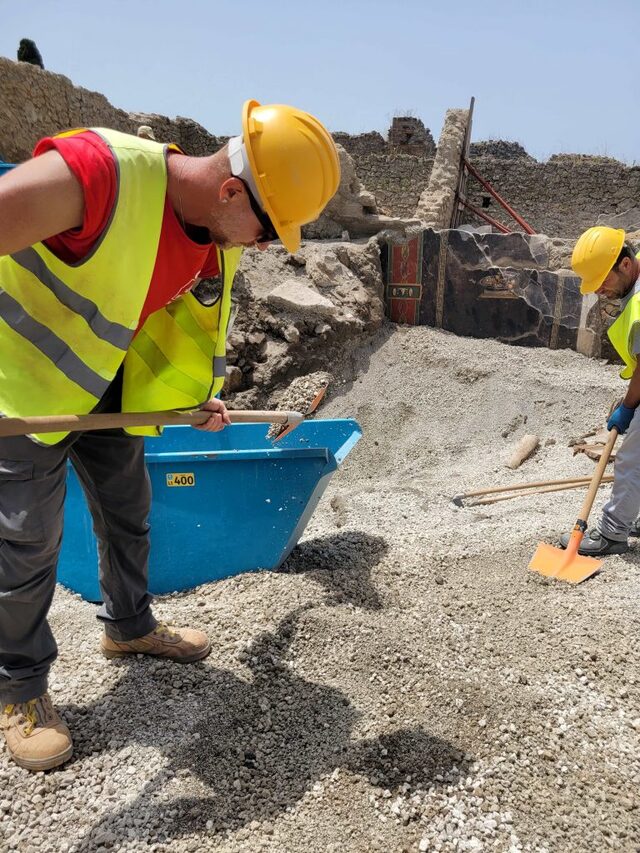
The city’s preservation beneath volcanic ash has allowed archaeologists to study everything from the remains of homes and bakeries to public spaces like baths and temples. The discovery of the pizza-like fresco adds to this wealth of knowledge, highlighting not only what the Romans ate but also how they viewed food as part of their social and cultural fabric.

Cultural and Historical Implications of the Pompeii Fresco
The fresco found in Pompeii also has broader implications for our understanding of food history. For centuries, pizza has been considered a humble dish, a “poor man’s food” born in Naples. Yet, as the fresco shows, this flatbread topped with various ingredients is not a modern invention, but a culinary tradition that spans millennia. By tracing the origins of pizza back to ancient Rome, we gain a deeper understanding of how food evolves over time, shaped by cultural, social, and geographical factors.
The contrast between the simple ingredients depicted in the fresco and the luxurious setting in which they are served also highlights the connection between food and status in ancient Rome. While pizza today may be enjoyed by people from all walks of life, in ancient times, the types of food served were often reflective of one’s social position. The fresco’s juxtaposition of frugality and luxury underscores this dynamic, revealing the complex relationship between food, wealth, and social identity.
Video
Watch the video to explore Pompeii then and now.
Conclusion: How Ancient Pompeii Continues to Inspire
The discovery of a fresco that closely resembles modern-day pizza in Pompeii is both surprising and enlightening. While the fresco does not depict an actual pizza, it provides valuable insight into the evolution of food and highlights the deep-rooted cultural significance of flatbreads in ancient times. This find further underscores Pompeii’s status as one of the most significant archaeological sites in the world, where each new discovery continues to unravel the mysteries of daily life in ancient Rome.
As we continue to explore the history of food and its role in shaping cultures, the ancient fresco from Pompeii serves as a reminder of the ways in which human beings have used food to connect, communicate, and create. From the simplest flatbreads to the global phenomenon that is pizza, food has always been more than just sustenance—it has been a symbol of community, tradition, and, as evidenced by the Pompeii fresco, a link to our distant ancestors.



